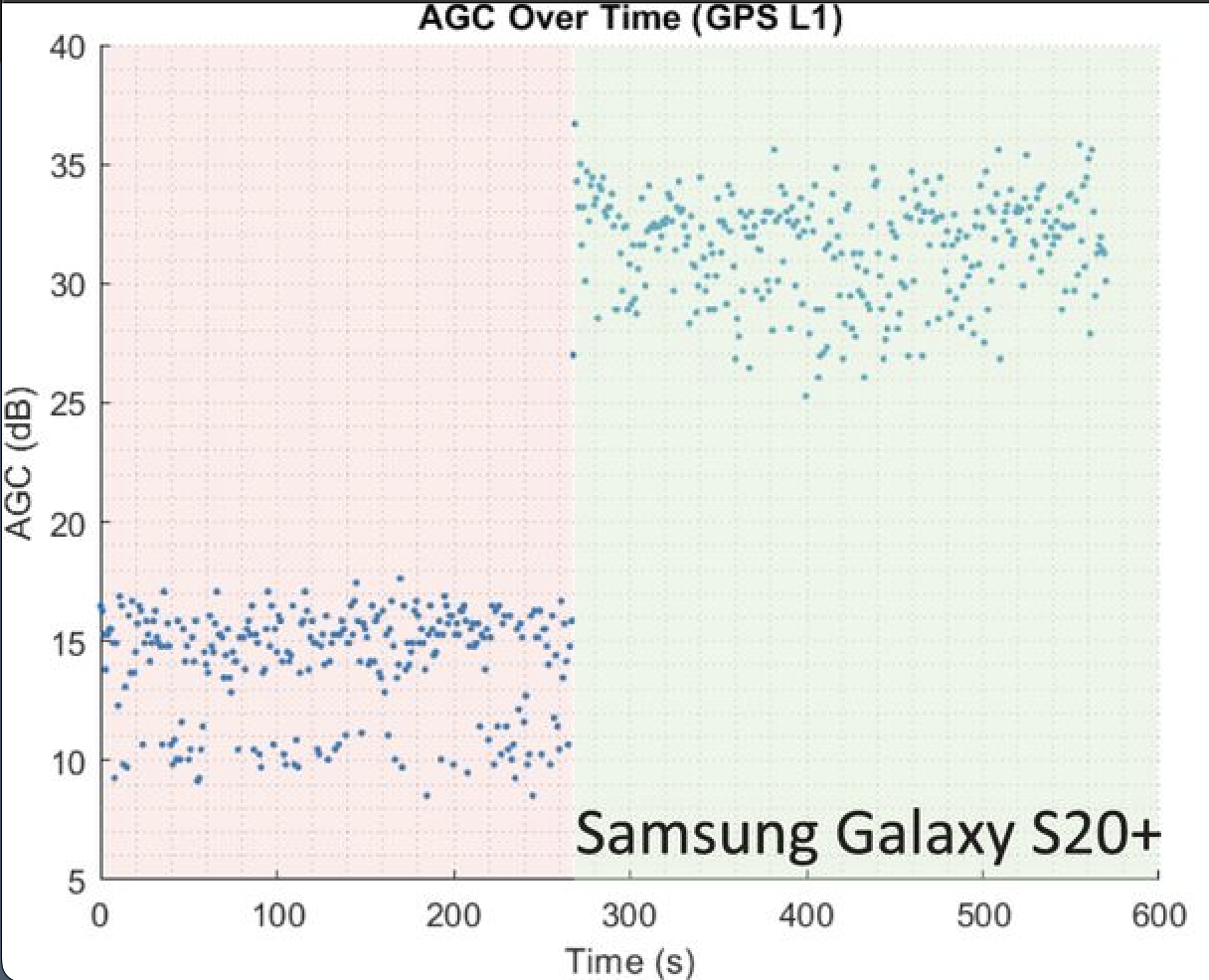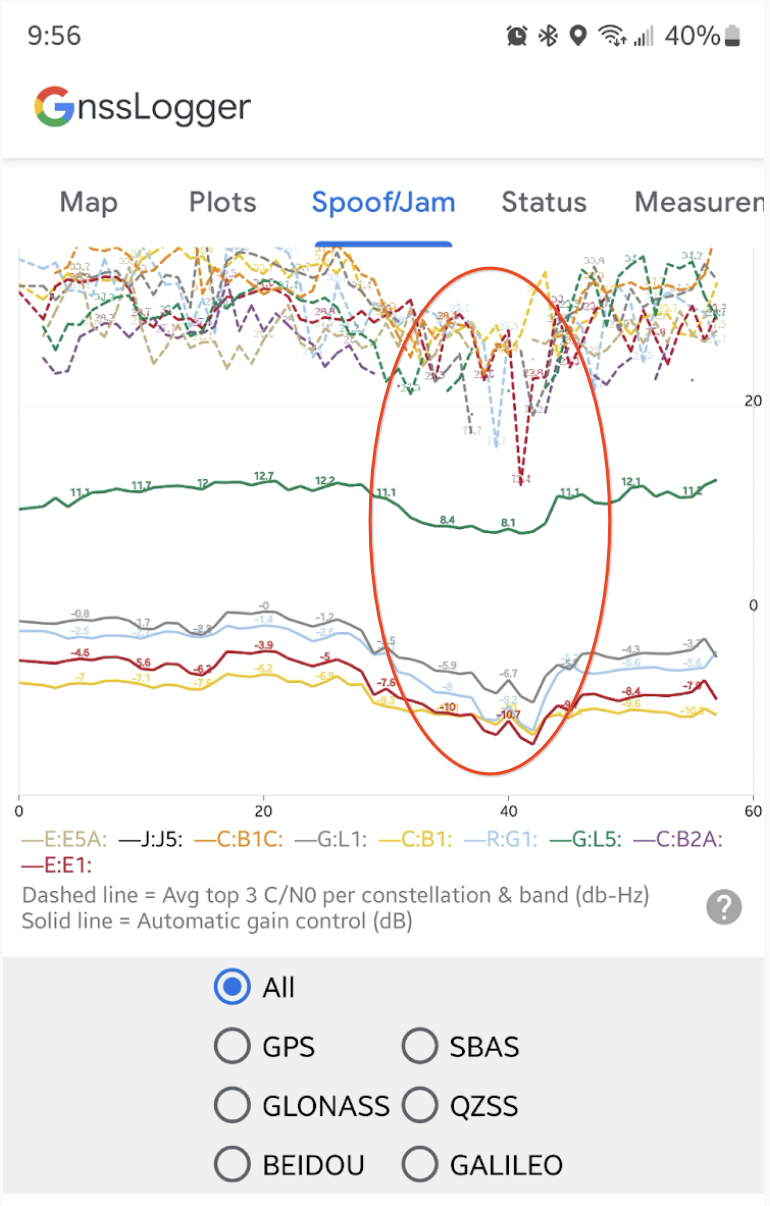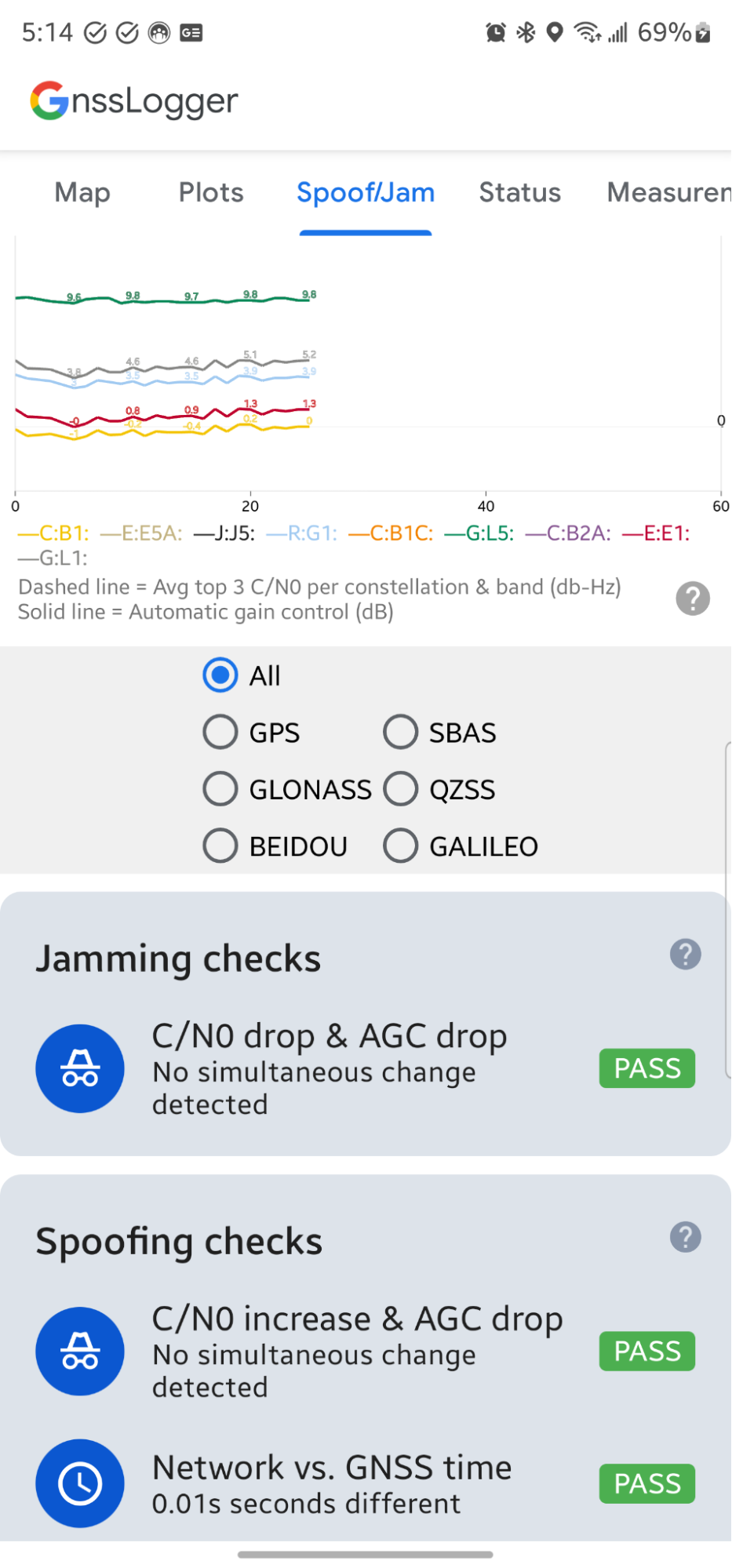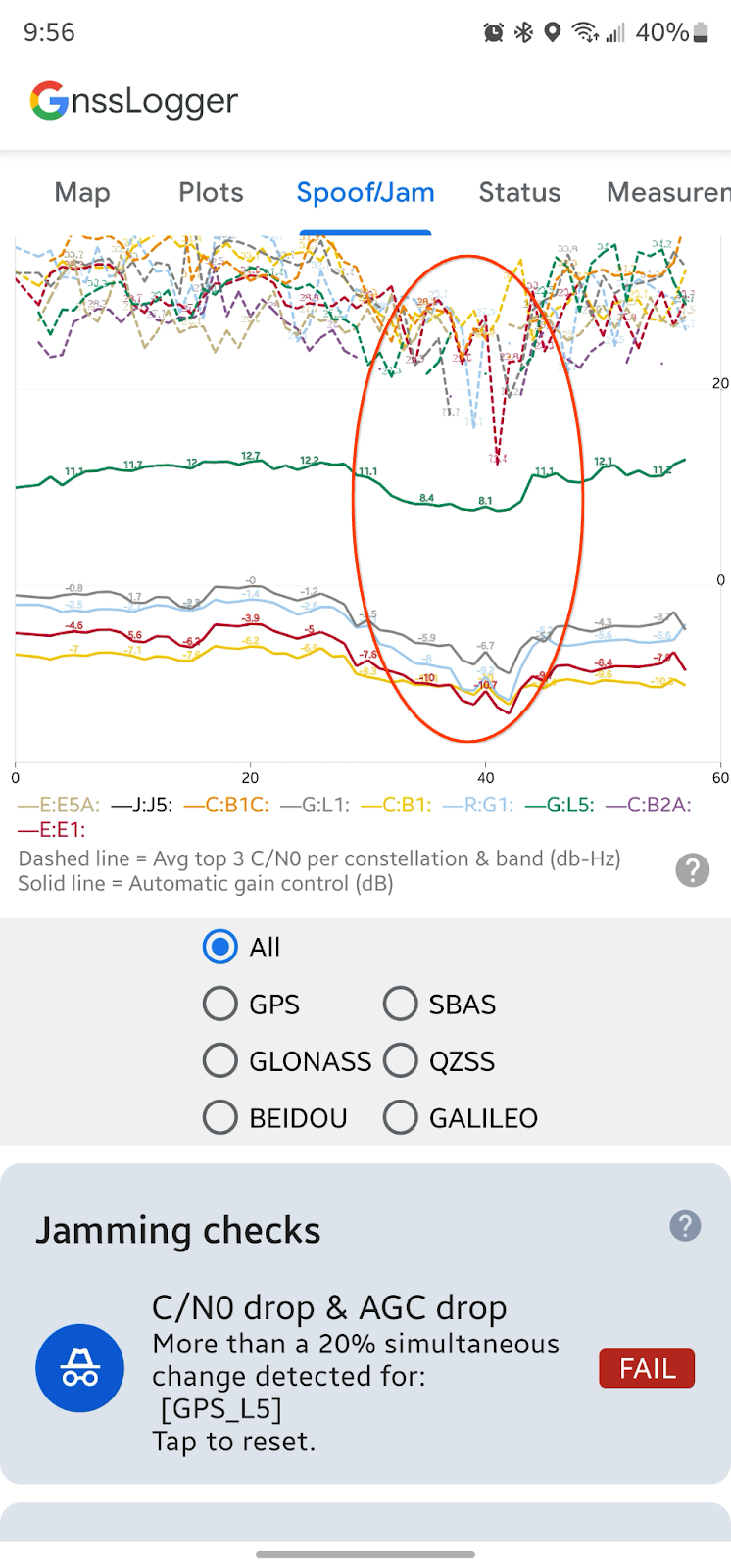تداخل GNSS را میتوان به دو دسته زیر تقسیم کرد:
- مسدود کردن
- کلاهبرداری
حملات پارازیت شامل پخش سیگنالهای رادیویی قوی در همان محدوده فرکانسی GNSS است که میتواند سیگنالهای نسبتاً ضعیفتر پخششده از ماهوارههای GNSS را تحت الشعاع قرار دهد. این امر میتواند مانع از محاسبه موقعیت مکانی گیرندههای GNSS، از جمله تلفنها، شود.
جعل سیگنال (Spoofing) حمله پیچیدهتری است که طی آن سیگنالهای جعلی که وانمود میکنند سیگنالهای واقعی GNSS هستند، پخش میشوند. این سیگنالهای جعلی میتوانند گیرنده GNSS را فریب دهند تا موقعیت یا زمانی را محاسبه کند که بسیار متفاوت از واقعیت است، که برای گیج کردن برنامههای نقشهبرداری و ناوبری و ارائه اطلاعات اشتباه به کاربران کافی است.
درباره کلاهبرداری یا پارازیت GNSS
قدرت سیگنال یا نسبت حامل به نویز (C/N0) سیگنال و همچنین کنترل خودکار بهره (AGC) رادیو GNSS در تلفن میتواند شاخص خوبی برای تداخل باشد.
وقتی که اختلال یا پارازیت مشاهده میشود، AGC تمایل به کاهش دارد. وقتی رادیو امواج رادیویی قوی دریافت میکند، بهره تقویتکننده (AGC) را کاهش میدهد تا توان سیگنال دریافتی را تنظیم کند.

با این حال، رفتار C/N0 بین رویدادهای پارازیت و جعل سیگنال تغییر میکند. برای رویدادهای پارازیت، نویز مشاهده شده توسط رادیو بسیار قویتر از حالت عادی است - بنابراین، مخرج نسبت حامل به نویز افزایش مییابد و مقدار C/N0 کاهش مییابد. برای جعل سیگنال، عکس این اتفاق میافتد - زیرا یک سیگنال جعلی پخش میشود که به اندازه کافی بلند است تا سیگنال واقعی ماهواره را خفه کند، قدرت کلی سیگنال قوی است و بنابراین C/N0 افزایش مییابد.
بررسی وجود اختلال یا پارازیت در GNSS
شما میتوانید از تب Spoof/Jam در برنامه GnssLogger برای بررسی تأثیر محیط اطراف خود بر C/N0 و AGC به صورت بلادرنگ استفاده کنید.
نمودار AGC و C/N0 به صورت آنی
تب Spoof/Jam نموداری از AGC و C/N0 را به صورت بلادرنگ برای هر صورت فلکی و باند GNSS نمایش میدهد (مثلاً "GPS L1" یا "G:L1:"، "Galileo E5a" یا "E:E5A:").

بررسیهای بلادرنگ برای یافتن اسپوفینگ و پارازیت
در زیر نمودار لحظهای AGC و C/N0 ، برنامه مجموعهای از بررسیهای خودکار دادهها را نمایش میدهد که شرایط مربوط به تداخل GNSS را شناسایی میکنند.

در بخش بررسیهای پارازیت ، برنامه بررسی میکند که آیا میانگین ۱۰ دوره اخیر C/N0 و AGC در مقایسه با ۵۰ دوره قبلی تغییر کرده است یا خیر. اگر C/N0 و AGC به طور همزمان کاهش یابند، این میتواند نشانهای از پارازیت GNSS باشد. در صورت تشخیص این وضعیت، کارت یک پیام FAIL به همراه اطلاعات بیشتر نشان میدهد:

اولین کارت در بخش بررسیهای Spoofing، C/N0 و AGC را نیز بررسی میکند، اما افزایش همزمان C/N0 و کاهش AGC را جستجو میکند.
دومین بررسی مربوط به جعل، به دنبال اختلاف بیش از یک ثانیه بین زمان GNSS محاسبه شده روی دستگاه و زمان بازیابی شده از طریق اینترنت از سرور پروتکل زمان شبکه (NTP) است (زمان شبکه - زمان GNSS). اختلاف زیاد میتواند نشان دهد که زمان GNSS محاسبه شده معتبر نیست.
نکات، ترفندها و هشدارها
هنگام استفاده از ویژگی Spoof/Jam در GnssLogger، باید به نکات زیر توجه کنید:
- این یک ویژگی آزمایشی است - همزمان با کسب اطلاعات بیشتر در مورد ویژگیهای AGC در دستگاههای مختلف اندروید، الگوریتمهای دقیق مورد استفاده برای تغییرات جعل و پارازیت ممکن است بهروزرسانی شوند.
- این ویژگی همه جعل و پارازیت را تشخیص نمیدهد — بررسیهای نمودار و دادههای بلادرنگ، کشف ویژگیهای دادهها را در بلادرنگ آسانتر میکند، اما به اندازه کافی قوی نیستند که بتوانند هر نمونهای از جعل یا پارازیت را تشخیص دهند.
- این ویژگی برای تشخیص تغییر در C/N0 و AGC طراحی شده است - اگر برنامه را در حضور spoofing یا jamming باز کنید و C/N0 و AGC ثابت بمانند، spoofing و jamming شناسایی نمیشوند.
- سرورهای NTP لزوماً امن نیستند - زمان شبکه نیز میتواند جعل شود.
با استفاده از ردیاب مشکلات عمومی ما، بازخورد خود را در مورد ویژگی Spoof/Jam ارائه دهید.

